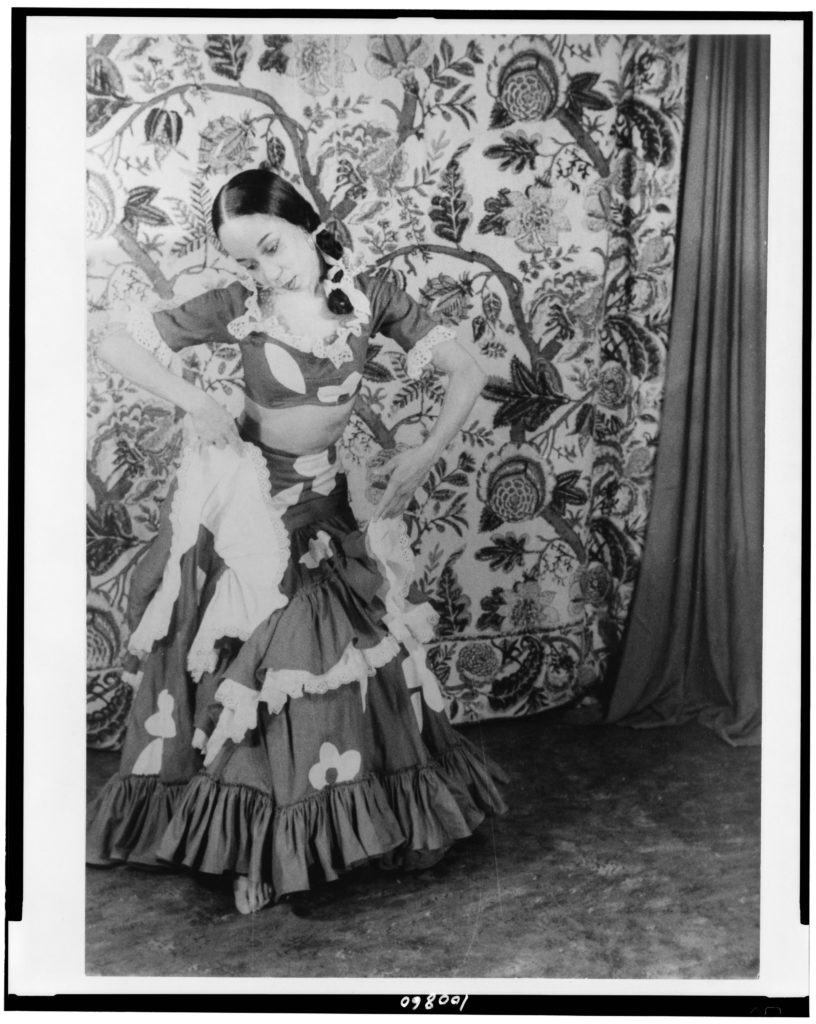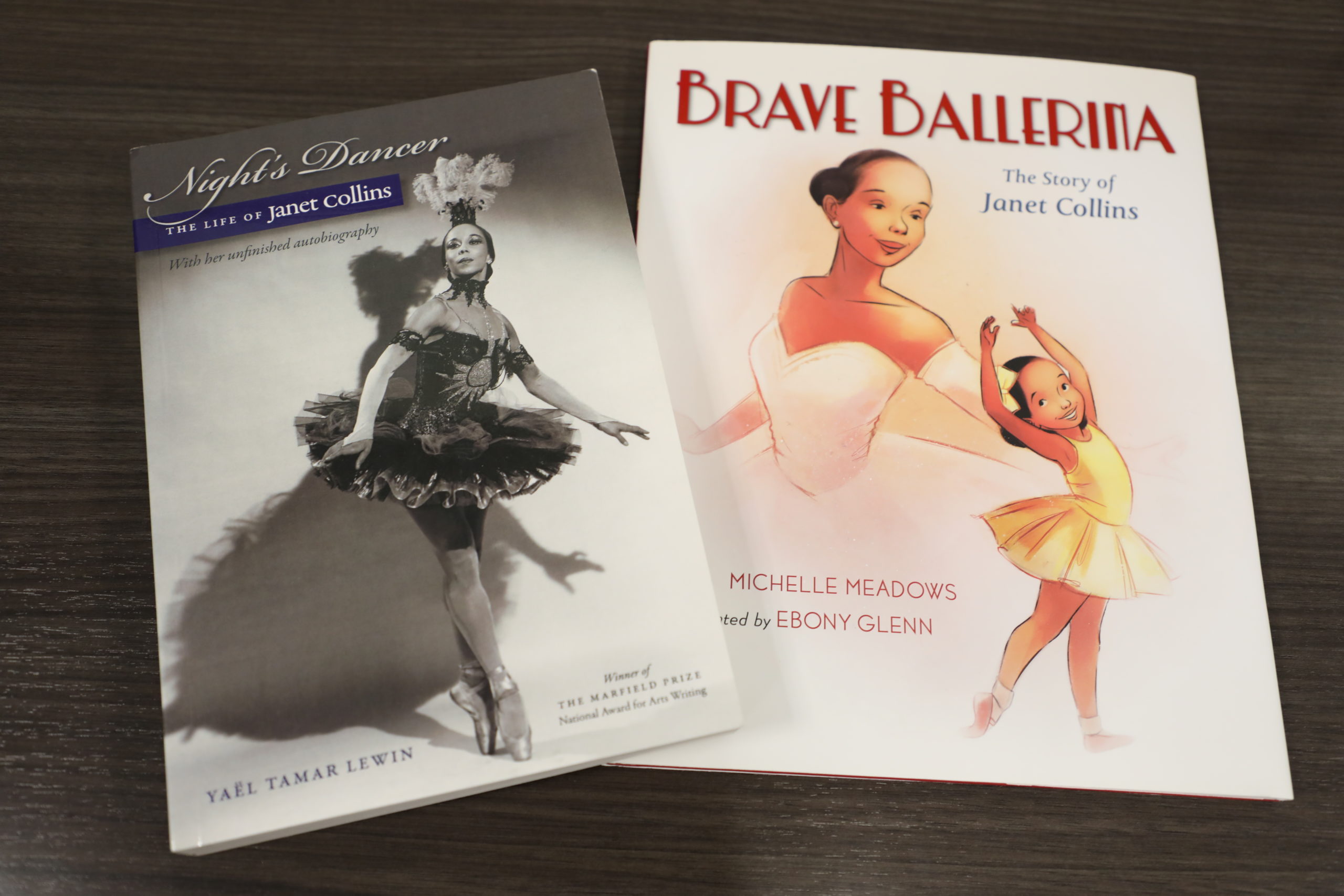March 26, 2024
#SAB90 – NYCB Debuts at New York City Center
Read the latest edition of #SAB90 to learn more about SAB's early relationship with New York City Ballet.
Today we are honored to share a glimpse into the life of a crucial figure in ballet history, Janet Collins. Ms. Collins was an accomplished and acclaimed dancer and choreographer who broke the color line with the Metropolitan Opera in 1951 when she made her debut as the leading dancer in the Met’s production of “Aïda.” She went on to become the first African American prima ballerina with the Metropolitan Opera. Ms. Collins was also a member of SAB’s guest faculty, teaching modern dance classes at the School from 1949-1950 and then again from 1967-1969.

Born in New Orleans and raised in Los Angeles, Janet Collins nurtured her talents in both dance and art, studying ballet, modern, and ethnic dances in addition to drawing and painting. At the age of 15, she auditioned for Lèonide Massine and was offered a place with the Ballet Russe de Monte Carlo, but she refused the offer upon learning that it came with the requirement that she whiten her skin with makeup to disguise the fact that she was Black. Despite the crushing impact of this experience, Ms. Collins was determined to overcome the severe racial barriers in ballet at that time.
Ms. Collins looked for other opportunities to perform and continued to hone her technique and skill in various dance styles. She performed in several productions in Los Angeles and appeared in a vaudeville tour before joining Katherine Dunham’s company. She ended up leaving with fellow company member Talley Beatty (who trained with SAB) and the two performed in several nightclubs before Ms. Collins decided to focus on presenting solo concerts in which she would perform her own choreography. To underwrite her project, she applied for and received a fellowship from the Rosenwald Fund, the same philanthropic organization that funded Katherine Dunham’s and later Pearl Primus’s research. Her solo work allowed her to display multiple aspects of her artistic skills and creativity, as she not only served as performer and choreographer but also designed her costumes and commissioned music for her pieces.

While her solo work in Los Angeles was critically received, it became clear to Ms. Collins that she needed to bring her dancing to New York City, and upon her relocation, she auditioned and was chosen to perform on a joint concert of emerging artists at the 92nd Street Y on February 20, 1949. She received glowing reviews from dance critics such as John Martin of the New York Times and Walter Terry of the New York Herald Tribune and was given the opportunity to present a solo concert at the 92nd Street Y just a few months later. She appeared at Jacob’s Pillow that summer, performing works that she had kept in her repertoire since her first solo concert in California, and was named 1949’s “Debutante of the Year” by Dance Magazine.
In September of 1949, Ms. Collins joined SAB’s guest faculty, replacing Merce Cunnigham who had recommended her for the position. She was the only staff member of color at the time. Her class consisted of about 50 male students, including Luis Johnson, Arthur Mitchell, Robert Joffrey and Gerald Arpino. She taught a style of her own; a melding of modern dance, ballet, and Dunham technique, but it was this congruence between modern dance and the balletic idiom, steeped in her stellar technique and choreographic intelligence, that attracted George Balanchine to bring her onto the SAB faculty.
Louis Johnson recalled her as a teacher at the School: “Bob Curtis, Arthur Mitchell and I were like the Three Musketeers because there were no other black dancers around. She was an example for us to see.”
“Everything was clear. But the speed with which she moved was unbelievable,” Arthur Mitchell said of Ms. Collins. “There was a wonderful feeling of flight all the time, but not flight to get away, flight to move. And she really reveled in the movement, she reveled in the movement. And as Balanchine said, ‘a dance is movement through time and space.’ She was the embodiment of that when she danced.”
Having established herself as a concert dancer of note, Ms. Collins was selected by Agnes de Mille for the role of Night in Cole Porter’s Broadway show, Out of This World in 1950. The show was a flop, but Collins won the Billboard Donaldson award for the best dancing on Broadway that year. Soon after, she came to the attention of Zachary Solov, the ballet master at the Metropolitan Opera, who persuaded then-director Rudolf Bing to hire her under contract. She made history with her debut as a prima ballerina with the Metropolitan Opera in 1951.
Watch a brief newsreel about Ms. Collins from the 1950s:
During her years at the Met, she received ample praise and glowing reviews for her appearances in operas such as Carmen, La Gioconda, and Samson et Dalila. Despite her success in New York, Collins faced racism on the road as the company toured to southern cities. As race laws kept her off of the stage, her parts were sometimes performed by understudies and her unrelenting perseverance in the face of such stringent racial barriers was incredibly courageous. Ms. Collins remained with the Met until 1954.

Ms. Collins remained active throughout the 50s touring with her own dance group throughout the United States and Canada. She later taught at various academies including San Francisco Ballet, Harkness House, Manhattanville College and SAB for an additional 2 academic years, from 1967-1969.
She passed away in 2003, but her tremendous impact in dance continues to inspire and influence today. We encourage taking a deeper dive into her remarkable life story by reading the biography, Night’s Dancer: The Life of Janet Collins, by author Yaël Tamar Lewin. The book highlights the career of this pioneering artist, drawing partly on materials donated by Ms. Collins herself. And for our younger readers, Brave Ballerina, The Story of Janet Collins, written by Michelle Meadows with illustrations by Ebony Glen, is a perfect introduction to this true trailblazer in ballet history!
Referenced Article for additional further reading: Jacob’s Pillow Dance Interactive Essays – Dance of the African Diaspora: Janet Collins
March 26, 2024
Read the latest edition of #SAB90 to learn more about SAB's early relationship with New York City Ballet.
February 26, 2024
Our new monthly series, #SAB90, we'll be sharing a short article detailing highlights of the School's history. Read our latest edition to learn about more early faculty members who laid the groundwork for the School's legacy.
January 19, 2024
Our new monthly series, #SAB90, we'll be sharing a short article detailing highlights of the School's history. Read our first edition for an overview on how SAB was first established by co-founders Lincoln Kirstein and George Balanchine.